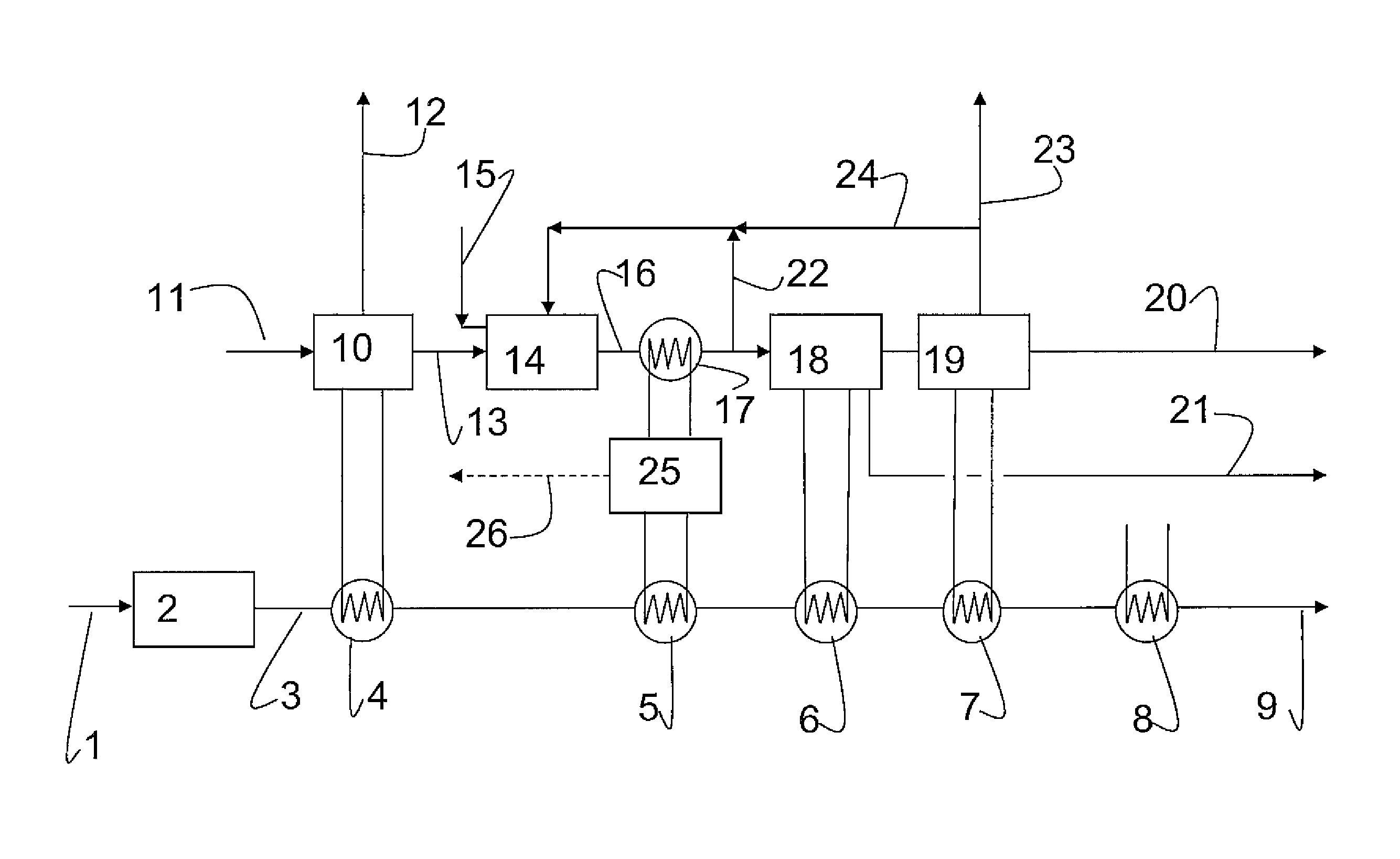Method and plant for re-gasification of LNG
a technology of regasification and plant, which is applied in the direction of steam engine plants, gas/liquid distribution and storage, lighting and heating apparatus, etc., can solve the problems of large seawater intake system, large amount of seawater, so as to improve the total energy efficiency and profitability of the plant, avoid or improve the energy efficiency of the plan
- Summary
- Abstract
- Description
- Claims
- Application Information
AI Technical Summary
Benefits of technology
Problems solved by technology
Method used
Image
Examples
example
[0034]An exemplary LNG re-gasification plant for the re-gasification of 1717 t / h (2 BSCFD) of LNG, has been simulated.
[0035]The non discharge regasification system as explained above has been estimated for an LNG facility with 1717 t / h (2BSCF / D) sales gas (9). The burner (14) will require additional 23.4 t / h of natural gas (15) to be burned with 93.1 t / h pure oxygen (13). Almost 700 t / h CO2 is recirculated to the burner (22 and 24). A vent line from the CO2 liquefaction unit discharge 2.5 t / h, mostly CO2 with some N2, Ar and O2, to the atmosphere (23).
[0036]The steam power system (25) produce the 55MW electrical power (26) required by the Regasification plant. In addition to the sales gas, the plant further produce:[0037]About 50 t / h liquefied CO2 at −38° C. from the liquefaction unit (19).[0038]About 50 t / h fresh water from the CO2 dryer train (18).[0039]The large amount of N2 vent (12) to the atmosphere from the ASU (10) is not regarded as a pollutant
[0040]The “Non-Discharge Regas...
PUM
 Login to View More
Login to View More Abstract
Description
Claims
Application Information
 Login to View More
Login to View More - R&D
- Intellectual Property
- Life Sciences
- Materials
- Tech Scout
- Unparalleled Data Quality
- Higher Quality Content
- 60% Fewer Hallucinations
Browse by: Latest US Patents, China's latest patents, Technical Efficacy Thesaurus, Application Domain, Technology Topic, Popular Technical Reports.
© 2025 PatSnap. All rights reserved.Legal|Privacy policy|Modern Slavery Act Transparency Statement|Sitemap|About US| Contact US: help@patsnap.com


